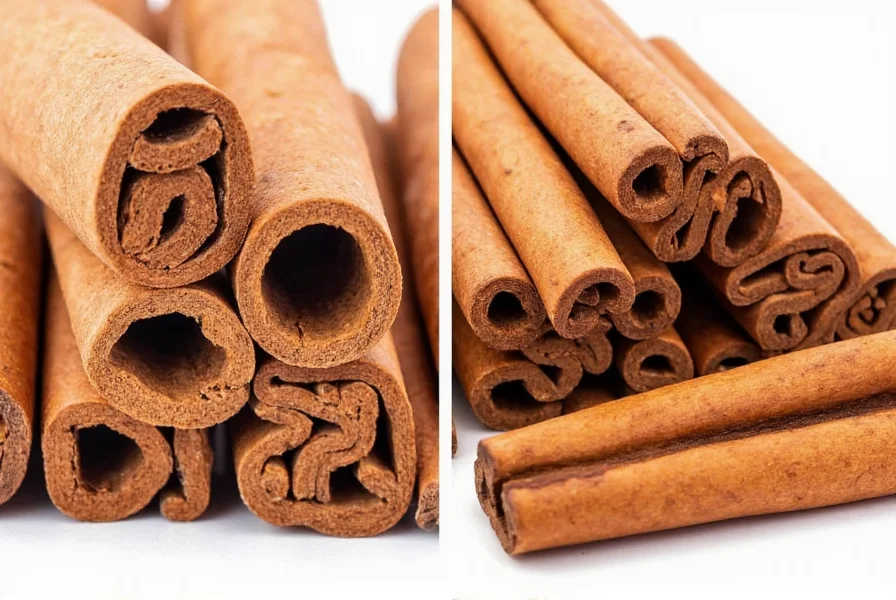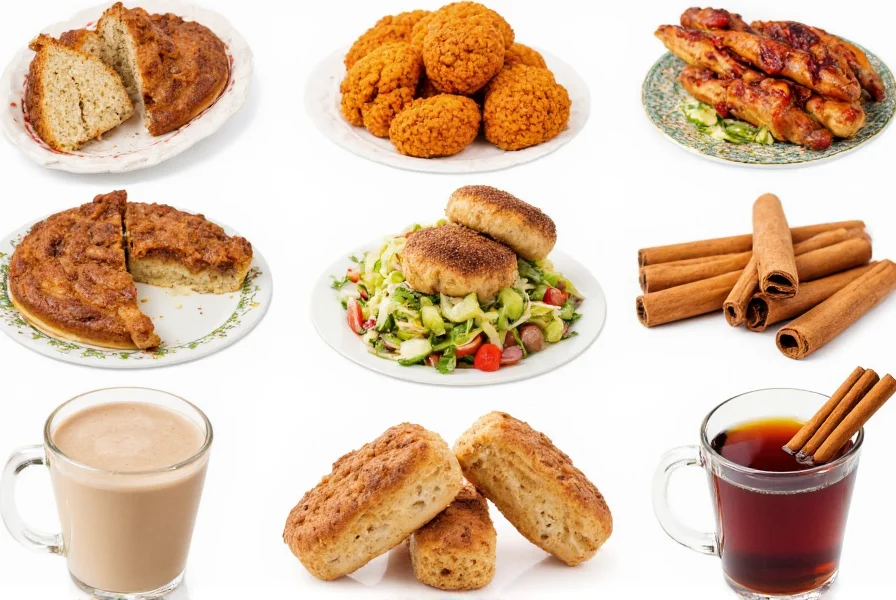Cinnamon has captivated palates and cultures for millennia, evolving from ancient trade commodity to modern kitchen staple. Understanding this spice begins with recognizing its botanical origins and distinctive characteristics. The harvesting process involves stripping bark from cinnamon trees, which then curls into characteristic ‘quills’ as it dries. These quills, either sold whole or ground into powder, deliver the familiar aroma and flavor profile that defines this beloved spice.
Types of Cinnamon: Ceylon vs Cassia
Not all cinnamon is created equal. The market primarily features two distinct varieties with notable differences:
| Characteristic | Ceylon Cinnamon | Cassia Cinnamon |
|---|---|---|
| Origin | Sri Lanka, India, Madagascar | China, Indonesia, Vietnam |
| Appearance | Multiple thin, delicate layers forming soft quills | Single thick, hard quill with rough texture |
| Flavor Profile | Milder, sweeter, more complex with citrus notes | Stronger, spicier, more intense with slight bitterness |
| Coumarin Content | Very low (safe for regular consumption) | Significantly higher (moderation recommended) |
| Market Availability | Less common, typically more expensive | Most widely available (80-90% of global supply) |

Historical Journey and Global Significance
Cinnamon's history stretches back to ancient civilizations, where it was valued more highly than gold. Egyptian texts from 2700 BCE reference cinnamon's use in embalming rituals, while Roman historian Pliny the Elder documented its extraordinary cost—15 times the value of silver by weight. Arab traders controlled the cinnamon trade for centuries, weaving elaborate tales about its origins to protect their lucrative monopoly.
The spice's journey from Sri Lankan forests to global kitchens represents one of history's most significant trade routes. Portuguese explorers established the first European foothold in Ceylon (modern Sri Lanka) in the 16th century, followed by Dutch and British colonial interests. Today, Indonesia leads global production, followed by China, Vietnam, and Sri Lanka, with each region cultivating distinctive cinnamon varieties suited to local conditions.
Botanical Characteristics and Harvesting Process
Cinnamon trees thrive in tropical climates, reaching 30-50 feet in height with oval leaves and small white flowers. The valuable spice comes from the tree's inner bark, harvested during the rainy season when the bark separates most easily from the woody core.
The meticulous harvesting process involves cutting young shoots, scraping off the outer bark, then carefully removing the thin inner bark layer. As this inner bark dries, it naturally curls into the familiar quill shape. Multiple quills are often nested within each other to form the cinnamon sticks sold in markets. The highest quality cinnamon features uniform color, strong aroma, and minimal breakage.
Culinary Applications Across Cultures
Cinnamon's versatility spans both sweet and savory applications across global cuisines. In Mexican cooking, it enhances chocolate-based mole sauces and rice dishes. Middle Eastern cuisines incorporate it into spice blends like baharat for meats and stews. Scandinavian baking traditions feature cinnamon heavily in pastries like Swedish kanelbullar (cinnamon buns).
Professional chefs distinguish between cinnamon varieties based on application. Ceylon's delicate flavor works best in subtle applications like custards, fruit compotes, and delicate baked goods. Cassia's robust profile stands up to long cooking times in curries, braises, and hearty desserts. Many pastry chefs blend both varieties to achieve complex flavor profiles in signature recipes.

Nutritional Profile and Research Insights
While primarily used for flavor, cinnamon contains several bioactive compounds worthy of note. A single teaspoon (2.6g) of ground cinnamon provides approximately:
- 6 calories
- 2.1g carbohydrates
- 0.1g protein
- 0.1g fat
- 1.1g fiber (4% of daily value)
- Significant amounts of manganese, calcium, and iron
Research has explored cinnamon's potential health properties, particularly regarding blood sugar regulation and antioxidant activity. While promising, experts emphasize that cinnamon should complement—not replace—established medical treatments. Consumers should note that Cassia cinnamon contains higher levels of coumarin, which may cause liver issues in sensitive individuals when consumed in large quantities over time.
Proper Storage and Quality Assessment
Maximizing cinnamon's shelf life requires proper storage techniques. Whole cinnamon sticks maintain freshness significantly longer than ground spice—up to 3-4 years versus 6-12 months. Both forms should be stored in airtight containers away from light, heat, and moisture. Freezing cinnamon can extend its shelf life but may cause clumping in ground varieties.
When assessing quality, look for these indicators:
- Aroma: Fresh cinnamon should release a strong, sweet fragrance when broken or ground
- Color: High-quality Ceylon appears light tan to medium brown; Cassia ranges from reddish-brown to dark brown
- Texture: Should feel dry and brittle, not moist or clumped
- Taste: Authentic cinnamon delivers immediate warmth followed by complex sweet-spicy notes
Conclusion: The Enduring Appeal of Cinnamon
Cinnamon's journey from ancient luxury to everyday essential reflects its unmatched ability to enhance both flavor and aroma across countless applications. Understanding the differences between Ceylon and Cassia varieties empowers consumers to make informed choices based on flavor preferences and intended use. Whether crafting delicate pastries or robust savory dishes, this versatile spice continues to earn its place as one of the world's most beloved flavorings, maintaining relevance across culinary traditions while adapting to modern tastes and applications.
Frequently Asked Questions
What exactly is cinnamon made from?
Cinnamon is made from the inner bark of trees belonging to the Cinnamomum genus. Harvesters remove the outer bark to access the inner bark layer, which naturally curls into quills as it dries. These quills are either sold whole as cinnamon sticks or ground into powder. The specific tree species determines whether the cinnamon is classified as Ceylon (Cinnamomum verum) or Cassia (primarily Cinnamomum cassia).
How can I tell the difference between Ceylon and Cassia cinnamon?
Ceylon cinnamon appears as multiple thin, papery layers forming a soft, hollow quill that's easy to crumble. It has a lighter tan color and delicate structure. Cassia cinnamon forms a single thick, hard quill with a rougher texture and darker reddish-brown color. When broken, Cassia is much harder and more brittle. Ceylon also has a sweeter, more complex aroma with citrus notes compared to Cassia's stronger, spicier profile.
Is one type of cinnamon healthier than the other?
Both types offer similar nutritional profiles, but Ceylon cinnamon contains significantly lower levels of coumarin—a compound that may cause liver issues in sensitive individuals when consumed in large quantities. For regular consumption, especially in therapeutic amounts, Ceylon is generally considered the safer option. However, Cassia remains perfectly safe when used in typical culinary amounts. Neither type should be considered a medical treatment, though both contain beneficial antioxidants.
What are the best culinary uses for each cinnamon type?
Ceylon cinnamon's delicate, sweet flavor works best in applications where subtle spice notes are desired: custards, fruit desserts, light sauces, and beverages like chai. Its milder profile won't overpower delicate ingredients. Cassia cinnamon's robust, spicy character stands up well to long cooking times and bold flavors, making it ideal for baked goods like snickerdoodles, hearty stews, curries, and spice blends. Many professional chefs use a combination of both types to achieve complex flavor profiles in signature recipes.
How should I store cinnamon to maintain freshness?
Store both cinnamon sticks and ground cinnamon in airtight containers away from light, heat, and moisture. Whole sticks retain freshness significantly longer than ground spice—up to 3-4 years versus 6-12 months for ground cinnamon. Avoid storing near stovetops or in clear containers on spice racks exposed to light. For extended storage, freezing cinnamon in an airtight container can preserve flavor compounds, though ground cinnamon may clump when thawed. Always check aroma and taste before use to verify freshness.











 浙公网安备
33010002000092号
浙公网安备
33010002000092号 浙B2-20120091-4
浙B2-20120091-4